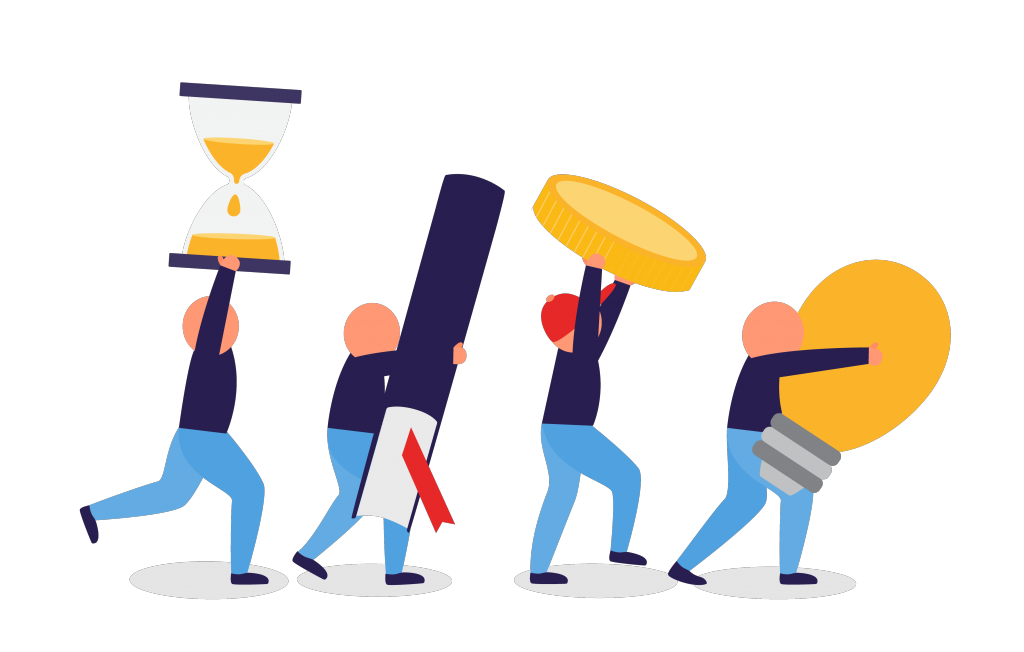以下是我们在此工具包中使用的一些流行语。我们努力将它们保持在最低限度,但我们无法抗拒这些!
气闸。
这是一个 100% 开放的流程,允许合作伙伴安全地协作,而不必担心知识产权污染或免费赠送创意。它涉及由受信任的代理人进行调解商业模式。
这是对企业如何赚钱的定义。它定义了收入的来源和成本的去向。它描述了对客户的价值主张以及构成业务的所有活动和合作伙伴关系挑战持有人。
有特定问题需要解决或有机会创新新产品、服务、流程或体验的组织发起开放式创新流程封闭式创新。
为专有商业化生成 IP 的内部秘密研发共同创造。
这是一种开放式创新模式,合作伙伴一起创建、合并或拥有新的想法、产品或业务合作。
当用作一种开放式创新模型时,它是合作伙伴协作组合 IP、通过众包或设计创新寻求创意的地方合作。
当用作一种开放式创新模式时,它是合作伙伴合作交换知识产权或专有技术以进行联合项目、临时联盟或进入新市场的地方人群。
这是一大群对我们的开放式创新挑战感兴趣并参与其中的在线人员(通常是潜在的创新合作伙伴、公众成员、员工或客户)众包。
一个使用基于网络的平台来托管社区的过程,这些社区提交想法以应对特定挑战探索。
100% 开放式创新工具包遵循典型开放式创新过程中的三个不同阶段:探索、提取、利用。探索阶段发现洞察力并制定策略提炼。
100% 开放式创新工具包遵循典型开放式创新过程中的三个不同阶段:探索、提取、利用。提取阶段用于发现想法和创建原型开发。
100% 开放式创新工具包遵循典型开放式创新过程中的三个不同阶段:探索、提取、利用。开发阶段构建协作业务模型和要测试的命题创新。
一个新想法的成功应用创新合作伙伴。
挑战持有者希望与之合作的个人或组织,因为他们拥有想法、技术、知识产权或解决方案。这可以是企业家、发明家、小型企业、初创企业、现有供应商、客户/客户、大学或用户创新雷达。
100%开放服务, 定位潜在创新合作伙伴有趣的问题。
这是一个简洁的问题,可以告诉潜在的创新合作伙伴挑战持有者正在寻找什么果酱。
该研讨会依赖于多元化的与会者、极端的协作活动和交替的思维方式来激发协作领先用户。
这是您的用户的一个子集,他们对您的产品或服务特别热情或要求很高,并且能够签署开发这些产品或服务的方式开放创新。
这是一种创新,合作伙伴共同承担创新的风险和回报开放式创新模式。
一种在考虑分担风险和协作回报时定义业务之间关系的方法角色。
这是对我们正在创新的用户类型的详细描述主张。
这是一种描述用户和其他人如何从创新中受益的方式原型。
这是一个新产品或服务的模型,它足够现实,能够开发和测试它社会听力。
这是一个通过分析社交媒体内容实时收集新见解的工具利益相关者。
这是一小群重要且有影响力的人,他们在我们的开放式创新挑战中或与我们的开放式创新挑战相关联,他们为这一过程做出了贡献并将从中受益故事板。
设计师使用此工具来帮助表达创新将如何在现实世界中作为故事中的一系列场景发挥作用值得信赖的代理人。
这是有时被任命为挑战者和潜在创新合作伙伴之间的经纪人和中介的个人或组织,以保护机密、建立信任和弥合文化差距未满足的需求。
这是用户无法从当前产品或服务中获得的特定利益或需求用户。
这是我们正在为之创新的个人或一群人,他们最终将使用我们通过开放式创新流程开发的产品、服务、流程或体验向量。
这是一张路线图,可帮助公司规划其未来的创新目标以及如何实现这些目标BUZZWORD BUSTER.
Here’s a selection of the buzzwords we’ve used in this toolkit. We’ve endeavoured to keep them to a minimum but we couldn’t resist these!AIRLOCK.
This is a 100%Open process that allows partners to collaborate safely without fear of intellectual property contamination or giving away an idea for free. It involves mediation by trusted agentsBUSINESS MODEL.
This is a definition of how a business makes money. It defines where revenue comes from and costs go to. It describes the value proposition for customers and all the activities and partnerships that make up the businessCHALLENGE HOLDER.
The organisation instigating the open innovation process who has a specific problem to solve or an opportunity to innovate a new product, service, process or experienceCLOSED INNOVATION.
In-house, secret R&D that generates IP for proprietary commercialisationCO-CREATION.
This is a type of Open Innovation Model where partners create, merge or own new ideas, offerings or businesses togetherCOLLABORATION.
When used as a type of Open Innovation Model, it is where partners collaborate to combine IP, seek ideas by crowdsourcing or design innovations togetherCOOPERATION.
When used as a type of Open Innovation Model, it is where partners cooperate to exchange IP or know-how for joint projects, temporary alliances or to access new marketsCROWD.
This is a large group of people online (typically potential innovation partners, members of the public, employees or customers) that are interested and engaged in our open innovation challengeCROWDSOURCING.
A process that uses a web-based platform to host communities that submit ideas in response to specific challengesEXPLORE.
The 100% Open Innovation Toolkit follows the three distinct phases in a typical open innovation process: Explore, Extract, Exploit. The Explore phase finds insights and sets strategyEXTRACT.
The 100% Open Innovation Toolkit follows the three distinct phases in a typical open innovation process: Explore, Extract, Exploit. The Extract phase is for the discovery of ideas and creation of prototypesEXPLOIT.
The 100% Open Innovation Toolkit follows the three distinct phases in a typical open innovation process: Explore, Extract, Exploit. The Exploit phase builds a collaborative business model and a proposition to testINNOVATION.
The successful application of a new ideaINNOVATION PARTNER.
The person or organisation that the Challenge Holder wants to work with because they have the ideas, technology, intellectual property or solution. This could be an entrepreneur, an inventor, a small business, a start-up, an exiting supplier, a client/customer, a university or a userINNOVATION RADAR.
A 100%Open service that locates potential Innovation PartnersINTERESTING QUESTION.
This is the concise question that tells potential Innovation Partners what Challenge Holders are looking forJAM.
This workshop depends on a diversity of attendees, extreme collaboration activities and alternating thinking styles to stimulate collaborationLEAD USER.
This is a sub-set of your users who are particularly enthusiastic or demanding about your product or service, and are able to sign-post ways in which these could be developedOPEN INNOVATION.
This is a type of innovation in which partners share the risks and the rewards of innovating togetherOPEN INNOVATION MODEL.
A way of defining the relationship between businesses when the sharing of risk and reward of collaboration is consideredPERSONA.
This is a detailed description of the type of user for whom we are innovatingPROPOSITION.
This is a way of describing how a user and others will benefit from an innovationPROTOTYPE.
This is a model of a new product or service that is just realistic enough to be able to develop and test itSOCIAL LISTENING.
This is a tool for gathering new insights in real time by analysing social media contentSTAKEHOLDER.
This is a small group of important and influential people within or connected to our open innovation challenge who contribute to the process and stand to benefit from itSTORYBOARD.
This tool is used by designers to help express how an innovation will work in the real world as a series of scenes from a storyTRUSTED AGENT.
This is the person or organisation that is sometimes appointed to act as a broker and intermediary between the Challenge Holder and potential Innovation Partners to protect confidentiality, build trust and bridge cultural gapsUNMET NEED.
This is a specific benefit or need that users aren’t getting from current products or servicesUSER.
This is the person or group of people we are innovating for and who will ultimately use the product, service, process or experience we are developing through the open innovation processVECTOR.
This is a road map that helps a company plan its future innovation targets and how to achieve them
最后编辑:





